|
|
|
Sort Order |
|
|
|
Items / Page
|
|
|
|
|
|
|
| Srl | Item |
| 1 |
ID:
132128
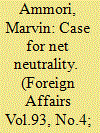

|
|
|
|
|
| Publication |
2014.
|
| Summary/Abstract |
For all the withering criticism leveled at the White House for its botched rollout of HealthCare.gov, that debacle is not the biggest technology-related failure of Barack Obama's presidency. That inauspicious distinction belongs to his administration's incompetence in another area: reneging on Obama's signature pledge to ensure "net neutrality," the straightforward but powerful idea that Internet service providers (ISPs) should treat all traffic that goes through their networks the same. Net neutrality holds that ISPs shouldn't offer preferential treatment to some websites over others or charge some companies arbitrary fees to reach users. By this logic, AT&T, for example, shouldn't be allowed to grant iTunes Radio a special "fast lane" for its data while forcing Spotify to make do with choppier service.
|
|
|
|
|
|
|
|
|
|
|
|
|
|
|
|
| 2 |
ID:
176280


|
|
|
| 3 |
ID:
138650
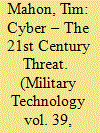

|
|
|
| 4 |
ID:
141377
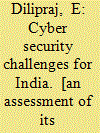

|
|
|
| 5 |
ID:
109027
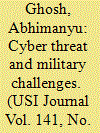

|
|
|
| 6 |
ID:
145947
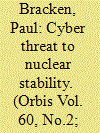

|
|
|
|
|
| Summary/Abstract |
The thesis of this article is that cyber war technologies are spilling over into precision strike and nuclear mission areas. The result will transform deterrence and arms race stability and lead to other significant changes. The driver behind this is a combination of long standing problems with mobile missiles along with new technologies not usually factored into strategic assessments: big data analytics, computer vision, and related information systems. When combined with drones and precision strike, the hunt for mobile missiles is becoming faster, cheaper, and better. The implications of this finding vary by country, but will shape major power nuclear modernization, crisis stability among secondary powers, and conventional attack of nuclear deterrents.
|
|
|
|
|
|
|
|
|
|
|
|
|
|
|
|
| 7 |
ID:
132231
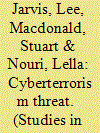

|
|
|
|
|
| Publication |
2014.
|
| Summary/Abstract |
This article reports on a recent research project exploring academic perspectives on the threat posed by cyberterrorism. The project employed a survey method, which returned 118 responses from researchers working across 24 different countries. The article begins with a brief review of existing literature on this topic, distinguishing between those concerned by an imminent threat of cyberterrorism, and other, more skeptical, views. Following a discussion on method, the article's analysis section then details findings from three research questions: (1) Does cyberterrorism constitute a significant threat? If so, against whom or what?; (2) Has a cyberterrorism attack ever taken place?; and (3) What are the most effective countermeasures against cyberterrorism? Are there significant differences to more traditional forms of anti- or counterterrorism? The article concludes by reflecting on areas of continuity and discontinuity between academic debate on cyberterrorism and on terrorism more broadly.
|
|
|
|
|
|
|
|
|
|
|
|
|
|
|
|
| 8 |
ID:
108288
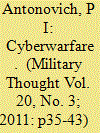

|
|
|
| 9 |
ID:
137231
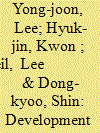

|
|
|
|
|
| Summary/Abstract |
This paper intends to propose countermeasures against increasingly sophisticated North Korean cyberterrorism through analysis of the cyber attack carried out by North Korea on March 20, 2013, which targeted South Korea’s major television stations and financial institutions, and also the attack of June 25, 2013, which was directed at South Korea’s government. These cyber attacks not only caused South Korea’s major television stations and banks to suffer from frozen computer terminals,
but also paralyzed websites including those belonging to the Presidential Office, the Prime Minister’s Office, government institutions and local media companies. This article addresses, firstly, the reasons why cyber attacks are now targeting the websites of media companies and financial institutions, whereas in the past they were intended to paralyze the national government by means of DDoS attacks. Secondly, the article attempts to predict the kinds of attack that can be expected in the future. Thirdly, in order to ensure that there are sound defenses against the continually growing threat of cyber terrorism, the article proposes an optimal system of countermeasures, describing related regulations, response strategies, and security personnel.
|
|
|
|
|
|
|
|
|
|
|
|
|
|
|
|
| 10 |
ID:
126188
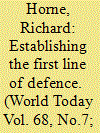

|
|
|
|
|
| Publication |
2012-13.
|
| Summary/Abstract |
Intrusive regulation could destroy the flexibility the private sector needs to protect itself,
|
|
|
|
|
|
|
|
|
|
|
|
|
|
|
|
| 11 |
ID:
123348
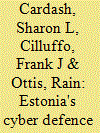

|
|
|
|
|
| Publication |
2013.
|
| Summary/Abstract |
The cyber threat spectrum that prevails today is both broad and deep. While we cannot protect everything, everywhere, all the time, we can and must make a concerted and sustained effort to shore up national defenses as they pertain to cybersecurity. Despite considerable differences of scale and scope, Estonia's made-in-country cyber solutions may hold promise for the United States, at least with some adjustments and tailoring to take into account differing requirements and traditions. There may be much to learn from a country that bills itself as "e-Estonia, the digital society," and also delivers on that promise. Specifically, the country's Cyber Defence League is a concept and construct that may prove useful for the United States to consider and contemplate at a time when significant cyber threats continue to multiply, but the skilled personnel needed to counter the challenge are in short supply on the U.S. side.
|
|
|
|
|
|
|
|
|
|
|
|
|
|
|
|
| 12 |
ID:
133728
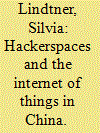

|
|
|
|
|
| Publication |
2014.
|
| Summary/Abstract |
This article discusses the visions and practices of DIY (do-it-yourself) maker culture in China. It analyses how the ideals held by DIY makers, such as openness, peer production, and individual empowerment, are formulated in relation to China's project of building a creative society and economy. To demonstrate, this article draws from long-term ethnographic research, including the setting up of China's first hackerspace, the proliferation of making, and partnerships between makers and manufacturers. China's makers are driven to reinvent what creativity, innovation, industrial production and citizenship mean today, simultaneously exploiting and challenging political rhetoric. By setting up hackerspaces, designing open technologies and starting up businesses, they craft alternative subject positions, for themselves and others. The contribution of this article is threefold. First, it fills a gap in current research by providing an account of a culture of technology production. Second, it proposes the analytical lens of 'making subjectivities' to open up the concept of the netizen, illustrating the importance for Chinese Internet research to consider not only technology use, but also the culture and materials of its production. Third, it demonstrates that maker culture is better understood as a parasitic culture rather than a counterculture, altering the system from within, contributing to our understanding of the relationship between technology use, production, society, activism and the state.
|
|
|
|
|
|
|
|
|
|
|
|
|
|
|
|
| 13 |
ID:
143022
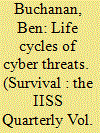

|
|
|
|
|
| Summary/Abstract |
Technology isn’t human, but it has stages of life. The period after the conception of a new piece of technology is often marked by significant investments of time and resources, often with little tangible return. If this work is successful, the technology begins to enter use, benefiting from iteration and design improvements. It may then begin to spread, gaining in popularity and begetting virtuous economies of scale. If all continues to progress, the technology will mature in the marketplace. Even if it attains market dominance, however, that position will not be permanent. In time, an upstart technology will appear on the scene, and the process will begin again. Sometimes the old technology will stick around in one form or another, carving out a niche role for itself. More frequently, it will be cast aside and supplanted.
|
|
|
|
|
|
|
|
|
|
|
|
|
|
|
|
| 14 |
ID:
068054
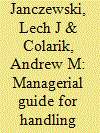

|
|
|
|
|
| Publication |
Hershey, Idea Group Publishing, 2005.
|
| Description |
xiv, 229p.Hbk
|
| Standard Number |
1591405831
|
|
|
|
|
|
|
|
|
|
|
|
Copies: C:1/I:0,R:0,Q:0
Circulation
| Accession# | Call# | Current Location | Status | Policy | Location |
| 050939 | 658.478/JAN 050939 | Main | On Shelf | General | |
|
|
|
|
| 15 |
ID:
152698
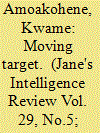

|
|
|
| 16 |
ID:
147153
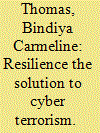

|
|
|
| 17 |
ID:
122283
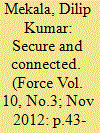

|
|
|
| 18 |
ID:
139711
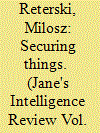

|
|
|
| 19 |
ID:
129600


|
|
|
| 20 |
ID:
132818
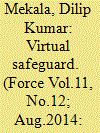

|
|
|
|
|
| Publication |
2014.
|
| Summary/Abstract |
In the backdrop of high expectations set by Narendra Modi before the General Elections, the government's inaction in the field of cyber security seems to be extremely disappointing. It is no secret that India has been far behind in enforcing a comprehensive policy related to cyber security. Last year, the National Cyber Security Policy was released by the then UPA government which listed a broad overview of the plan of action, but it failed to provide the roadmap for implementation. All eyes are now on the National Security Advisor Ajit Doval to see how he would deal with the issue.
|
|
|
|
|
|
|
|
|
|
|
|
|
|
|
|
|
|
|
|
|